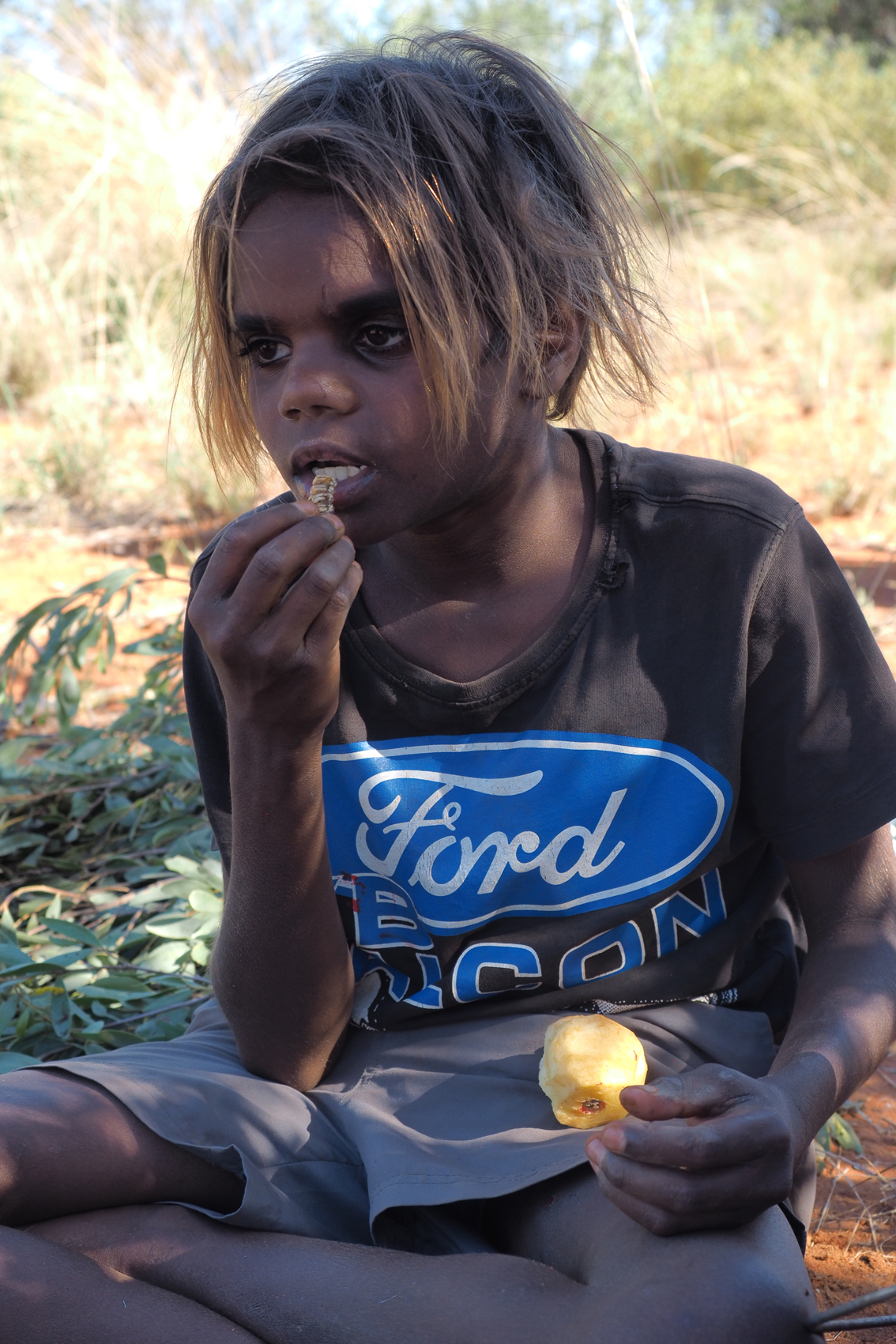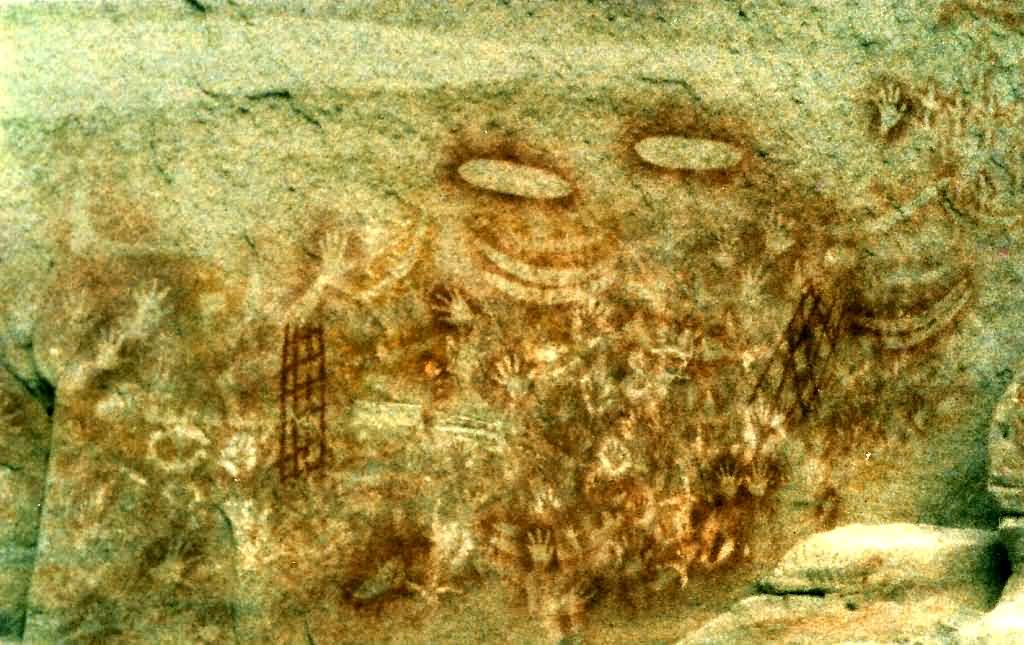|
Welcome To Country
A Welcome to Country is a ritual or formal ceremony performed as a land acknowledgement at many events held in Australia. It is intended to highlight the cultural significance of the surrounding area to the descendants of a particular Aboriginal clan or language group who were recognised as the original human inhabitants of the area. For the Welcome to be recognised as official, it must be performed by a recognised elder of the group. Welcomes to Country are sometimes accompanied by traditional smoking ceremonies, music or dance. Where an elder is not available to perform the Welcome, or there is not a recognised traditional owner, an Acknowledgement of Country may be offered instead. The term "Country" has a particular meaning and significance to many Aboriginal peoples, encompassing an inter-dependent relationship between an individual or a people and their ancestral or traditional lands and seas. The connection to land involves culture, spirituality, language, law/lore, k ... [...More Info...] [...Related Items...] OR: [Wikipedia] [Google] [Baidu] |
Wiradjuri Elder, Aunty Isobel Reid, Giving The Welcome To Country At The Centenary Of The Kangaroo March Launch
The Wiradjuri people (; ) are a group of Aboriginal Australian people from central New South Wales, united by common descent through kinship and shared traditions. They survived as skilled hunter-fisher-gatherers, in family groups or clans, and many still use knowledge of hunting and gathering techniques as part of their customary life. In the 21st century, major Wiradjuri groups live in Condobolin, Peak Hill, Narrandera and Griffith. There are significant populations at Wagga Wagga and Leeton and smaller groups at West Wyalong, Parkes, Dubbo, Forbes, Cootamundra, Darlington Point, Cowra and Young. Name The Wiradjuri autonym is derived from , meaning "no" or "not", with the comitative suffix or meaning "having". That the Wiradjuri said , as opposed to some other word for "no", was seen as a distinctive feature of their speech, and several other tribes in New South Wales, to the west of the Great Dividing Range, are similarly named after their own words for "no". A simi ... [...More Info...] [...Related Items...] OR: [Wikipedia] [Google] [Baidu] |
Clan
A clan is a group of people united by actual or perceived kinship and descent. Even if lineage details are unknown, clans may claim descent from founding member or apical ancestor. Clans, in indigenous societies, tend to be endogamous, meaning that their members can marry one another. Clans preceded more centralized forms of community organization and government, and exist in every country. Members may identify with a coat of arms or other symbol to show that they are an . Kinship-based groups may also have a symbolic ancestor, whereby the clan shares a "stipulated" common ancestor who serves as a symbol of the clan's unity. Etymology The English word "clan" is derived from old Irish meaning "children", "offspring", "progeny" or "descendants"; it is not from the word for "family" or "clan" in either Irish or Scottish Gaelic. According to the ''Oxford English Dictionary'', the word "clan" was introduced into English in around 1425, as a descriptive label for the organization ... [...More Info...] [...Related Items...] OR: [Wikipedia] [Google] [Baidu] |
Makassan Contact With Australia
Makassar people from the region of Sulawesi in Indonesia began visiting the coast of northern Australia sometime around the middle of the 18th century, first in the Kimberley region, and some decades later in Arnhem Land. They were men who collected and processed ''trepang'' (also known as sea cucumber), a marine invertebrate prized for its culinary value generally and for its supposed medicinal properties in Chinese markets. The term Makassan (or Macassan) is generally used to apply to all the trepangers who came to Australia. Fishing and processing of trepang The creature and the food product are commonly known in English as sea cucumber, ''bêche-de-mer'' in French, '' gamat'' in Malay, while Makassarese has 12 terms covering 16 different species. One of the Makassar terms, for trepang, ''taripaŋ'', entered the Aboriginal languages of the Cobourg Peninsula, as ''tharriba'' in Marrku, as ''jarripang'' in Mawng or otherwise as ''darriba.'' ''Trepang'' live on the s ... [...More Info...] [...Related Items...] OR: [Wikipedia] [Google] [Baidu] |
Dutch Exploration Of Australia
The maritime European exploration of Australia consisted of several waves of European seafarers who sailed the edges of the Australian continent. Dutch navigators were the first Europeans known to have explored and mapped the Australian coastline. The first documented encounter was that of Dutch navigator Willem Janszoon, in 1606. Dutch seafarers also visited the west and north coasts of the continent, as did French explorers. The most famous expedition was that of Royal Navy Lieutenant (later Captain) James Cook 164 years after Janszoon's sighting. After an assignment to make observations of the 1769 Transit of Venus, Cook followed Admiralty instructions to explore the south Pacific for the reported ''Terra Australis'' and on 19 April 1770 sighted the south-eastern coast of Australia and became the first recorded European to explore the eastern coastline. Explorers by land and sea continued to survey the continent for some years after settlement. Pro-Iberian hypotheses and ... [...More Info...] [...Related Items...] OR: [Wikipedia] [Google] [Baidu] |
Aboriginal Australian Ceremony
Australian Aboriginal culture includes a number of practices and ceremonies centered on a belief in the Dreamtime and other mythology. Reverence and respect for the land and oral traditions are emphasised. Over 300 languages and other groupings have developed a wide range of individual cultures. Due the colonization of Australia under terra nullius concept these cultures were treated as one monoculture. Australian Aboriginal art has existed for thousands of years and ranges from ancient rock art to modern watercolour landscapes. Aboriginal music has developed a number of unique instruments. Contemporary Australian Aboriginal music spans many genres. Aboriginal peoples did not develop a system of writing before colonisation, but there was a huge variety of languages, including sign languages. Oral tradition Cultural traditions and beliefs as well as historical tellings of actual events are passed down in Aboriginal oral tradition, also known loosely as oral history (although t ... [...More Info...] [...Related Items...] OR: [Wikipedia] [Google] [Baidu] |
AIATSIS
The Australian Institute of Aboriginal and Torres Strait Islander Studies (AIATSIS), established as the Australian Institute of Aboriginal Studies (AIAS) in 1964, is an independent Australian Government statutory authority. It is a collecting, publishing and research institute and is considered to be Australia's premier resource for information about the cultures and societies of Aboriginal and Torres Strait Islander peoples. The institute is a leader in ethical research and the handling of culturally sensitive material'Aboriginal and Torres Strait Islander Library, Information and Resource Network (ATSILIRN) Protocols for Libraries, Archives and Information Services', http://atsilirn.aiatsis.gov.au/protocols.php, retrieved 12 March 2015‘'AIATSIS Collection Development Policy 2013 – 2016'’, AIATSIS website, http://aiatsis.gov.au/sites/default/files/docs/about-us/collection-development-policy.pdf, retrieved 12 March 2015 and holds in its collections many unique and irreplac ... [...More Info...] [...Related Items...] OR: [Wikipedia] [Google] [Baidu] |
Native Title In Australia
Native title is the designation given to the common law doctrine of Aboriginal title in Australia, which is the recognition by Australian law that Indigenous Australians (both Aboriginal Australian and Torres Strait Islander people) have rights and interests to their land that derive from their traditional laws and customs. The concept recognises that in certain cases there was and is a continued beneficial legal interest in land held by Indigenous peoples which survived the acquisition of radical title to the land by the Crown at the time of sovereignty. Native title can co-exist with non-Aboriginal proprietary rights and in some cases different Aboriginal groups can exercise their native title over the same land. The foundational case for native title in Australia was ''Mabo v Queensland (No 2)'' (1992). One year after the recognition of the legal concept of native title in ''Mabo'', the Keating Government formalised the recognition by legislation with the enactment by the Au ... [...More Info...] [...Related Items...] OR: [Wikipedia] [Google] [Baidu] |
Indigenous Land Rights In Australia
Indigenous land rights in Australia, also known as Aboriginal land rights in Australia, relate to the rights and interests in land of Aboriginal and Torres Strait Islander people in Australia, and the term may also include the struggle for those rights. Connection to the land and waters is vital in Australian Aboriginal culture and to that of Torres Strait Islander people, and there has been a long battle to gain legal and moral recognition of ownership of the lands and waters occupied by the many peoples prior to colonisation of Australia starting in 1788, and the annexation of the Torres Strait Islands by the colony of Queensland in the 1870s. , Aboriginal and Torres Strait Islander peoples’ rights and interests in land are formally recognised over around 40 per cent of Australia’s land mass, and sea rights have also been asserted in various native title cases. Description and distinctions According to the Attorney-General's Department: Text was copied from this sourc ... [...More Info...] [...Related Items...] OR: [Wikipedia] [Google] [Baidu] |
The Dreaming
The Dreaming, also referred to as Dreamtime, is a term devised by early anthropologists to refer to a religio-cultural worldview attributed to Australian Aboriginal beliefs. It was originally used by Francis Gillen, quickly adopted by his colleague Baldwin Spencer and thereafter popularised by A. P. Elkin, who, however, later revised his views. The Dreaming is used to represent Aboriginal concepts of ''Everywhen'', during which the land was inhabited by ancestral figures, often of heroic proportions or with supernatural abilities. These figures were often distinct from gods, as they did not control the material world and were not worshipped but only revered. The concept of the Dreamtime has subsequently become widely adopted beyond its original Australian context and is now part of global popular culture. The term is based on a rendition of the Arandic word ''alcheringa'', used by the Aranda (Arunta, Arrernte) people of Central Australia, although it has been argued tha ... [...More Info...] [...Related Items...] OR: [Wikipedia] [Google] [Baidu] |
Indigenous Australian Seasons
Indigenous Australian seasons are differently classified than the traditional four-season calendar used by most western European peoples. Aboriginal Australians and Torres Strait Islander people have distinct ways of dividing the year up. Naming and understanding of seasons differed between groups of Aboriginal peoples, and depending on where in Australia the group lives. The Australian Bureau of Meteorology and the CSIRO have both worked with various groups to produce information about a number of Aboriginal and Torres Strait Islander seasonal calendars. Background Aboriginal and Torres Strait Islander peoples observe the position of the stars in the sky and follow water, plant and animal cycles as ways of identifying seasonal phenomena. The seasonal calendars of different Aboriginal and Torres Strait Islander cultural groups demonstrate an understanding of the interdependence and interrelationships amongst living things. They use their calendars to predict seasonal changes an ... [...More Info...] [...Related Items...] OR: [Wikipedia] [Google] [Baidu] |
Connection To Country
The concept of country, as an identity or descriptive quality, varies widely across the world, although some elements may be common among several groups of people. Rurality One interpretation is the state or character of being rural, regardless of environment. It can be at direct odds with quantitative measures of rurality such as those used by governments for statistical analysis (which are often vague and poorly defined). "Country" in this sense is subjective and often intuitive. It encompasses a broad base of ideas and perceptions that may differ at local, regional or national levels. Social development Identity is often localized within relatively isolated populations which, having distinct traditions of their own, can often be viewed as an outgroup and marginalized by the dominant culture. Contrast between rural and urban realities not only produces measurable differences politically and economically, but also affects populations in terms of social identification. C ... [...More Info...] [...Related Items...] OR: [Wikipedia] [Google] [Baidu] |






